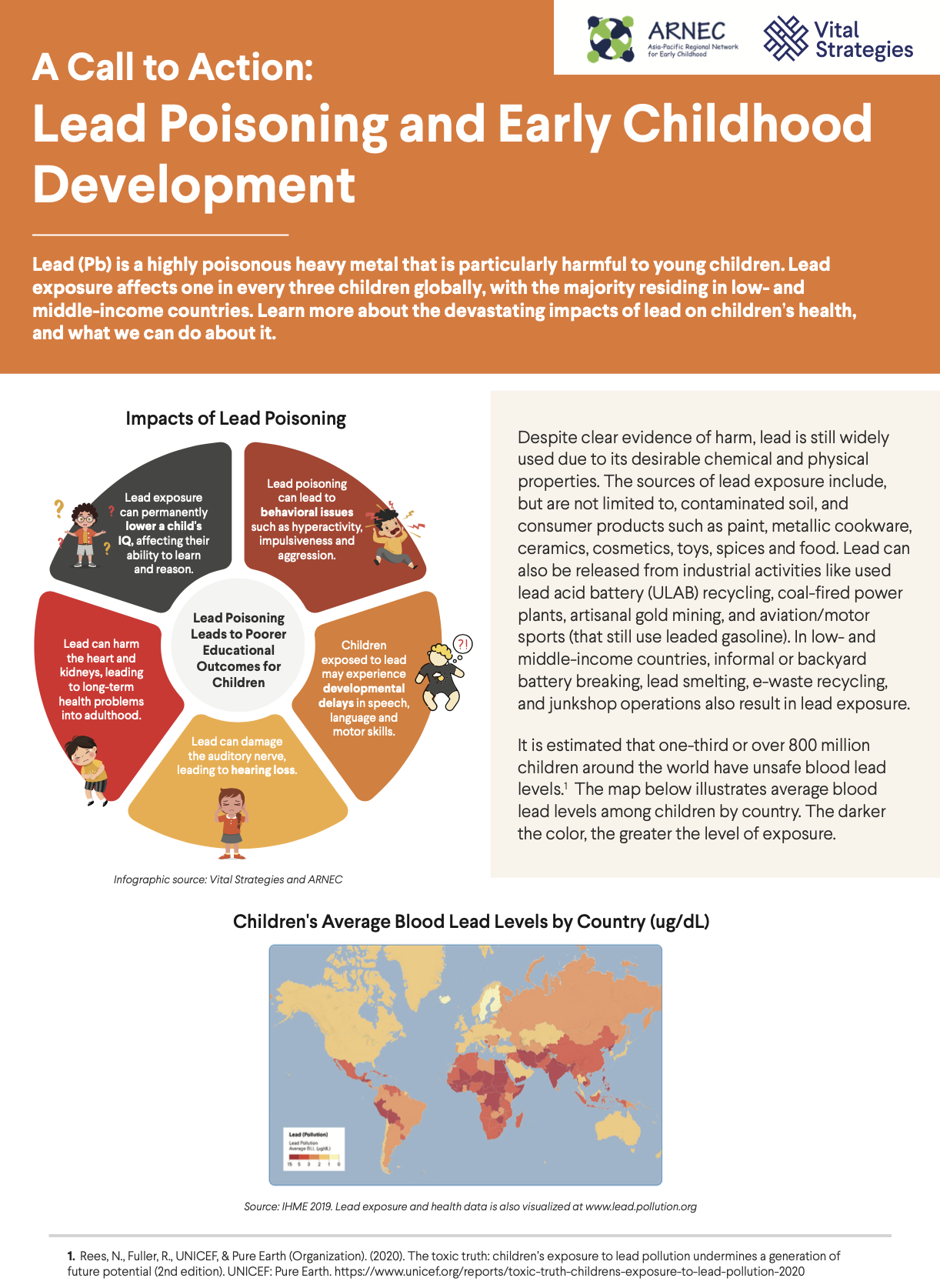Lead is a highly toxic heavy metal, especially dangerous to young children. Globally, one in three children is affected by lead exposure, with most cases occurring in low- and middle-income countries.
Lead exposure poses a significant threat to young children. According to the WHO, there is no safe level of lead in the blood. Even at low levels, lead can impair brain development and disrupt the nervous system—often without noticeable symptoms in children. At higher levels, lead poisoning can cause severe health issues, including abdominal pain, vomiting, constipation, coma, and even death. The dangers extend beyond childhood. Long-term exposure to lead in food, water, and air increases the risk of cardiovascular disease and kidney damage in later life. Despite its devastating impact, lead poisoning is entirely preventable.
This factsheet jointly developed by Vital Strategies and ARNEC (Asia-Pacific Regional Network for Early Childhood Development) showcases in detail the impacts of lead poisoning on early childhood development, why young children are at an increased risk of lead poisoning, and what solutions can be applied at an individual, community, sub-national and national level to prevent childhood exposure to lead.
To learn more, download the factsheet.
Read the brief on flooding and early childhood development.
Read the brief on air pollution and early childhood development.
Recent Abstracts
Effects of Heat on Early Childhood Development
Blood Lead Surveillance of Children and Pregnant Women in Tamil Nadu, India
Sportswashing through Media: Coca-Cola’s Olympic Play – A Research Report
What’s in Our Food?
Mais Dados Mais Saúde
More Data, Better Health – Primary Health Care
Mais Dados Mais Saúde: Experiência De Discriminação Cotidiana Pela População Brasileira
More Data, Better Health – Experience of everyday Discrimination by the Brazilian population
Monitoramento de Estratégias pelo Fim da Violência contra Crianças e Adolescentes
Harm Reduction: The Neglected Pillar of US Drug Policy
